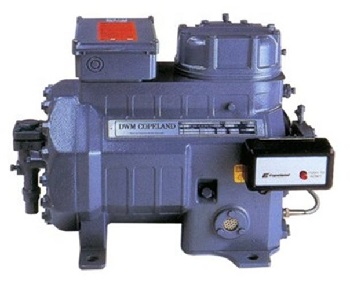

Types of Compressor Scrap
- AC Compressor Scrap
- Refrigerator Compressor Scrap
- Industrial Compressor Scrap
- Rotary Compressor Scrap
- Hermetic Compressor Scrap
- Semi-Hermetic Compressor Scrap
Compressor scrap refers to the metal scrap generated from discarded compressors that are typically used for refrigeration, air conditioning, and other industrial applications. Compressor scrap is typically made up of a mixture of different metals, including copper, aluminum, and steel.
Compressor scrap can be a valuable source of raw materials for recycling and can be reused in the manufacturing of new products. Recycling compressor scrap can help reduce the need for new mining and production of metals, which can have a significant environmental impact. Additionally, recycling compressor scrap can also help conserve energy and reduce greenhouse gas emissions that would result from new metal production.
Compressor scrap can be found in various forms, including intact compressors, compressor housings, and various parts of the compressor. The scrap metal is typically processed and sorted to separate the different types of metals, which can then be sold to metal recycling companies.
Do You Know ?
The earliest air compressor was actually the human lung. Since the human body can exhale oxygen, people once used their breath to stoke fires. The trend of providing our own air pressure faded around 3000 B.C. as the practice of metallurgy became prevalent. Metal-smiths were melting down various materials such as gold and copper, and they soon realized that higher temperatures were needed.
Types of Compressor Scrap






Benefits of Compressor Scrap Recycling:
Compressor scrap can be recycled and repurposed in a variety of ways, including:
Metal Recycling: The different types of metals found in compressor scrap, such as copper, aluminum, and steel, can be separated and sold to metal recycling companies. These metals can then be reused in the manufacturing of new products.
Manufacturing: The metals recovered from compressor scrap can be used in the manufacturing of new products, such as automotive parts, construction materials, and consumer goods.
Construction: Compressor scrap can be repurposed for use in construction projects. For example, the steel from compressor scrap can be used in the construction of buildings, bridges, and other infrastructure projects.
Artistic Applications: Compressor scrap can also be used in artistic applications, such as sculpture and metalworking.
Energy Generation: The heat generated during the recycling process of compressor scrap can be used to generate energy in industrial settings, reducing the need for fossil fuels and reducing greenhouse gas emissions.
Overall, recycling compressor scrap can help reduce waste and conserve resources, while also providing a valuable source of raw materials for manufacturing and construction industries.
Compressor Scrap Recycling Process:
The recycling process for compressor scrap typically involves several steps:
Collection and Sorting: The compressor scrap is collected from various sources and sorted based on the type of compressor and the types of metals present in the scrap.
Crushing and Shredding: The compressor scrap is crushed and shredded into smaller pieces to facilitate separation of the different metals.
Magnetic Separation: A magnetic separator is used to separate the ferrous metals, such as steel, from the non-ferrous metals, such as copper and aluminum.
Eddy Current Separation: An eddy current separator is used to separate the non-ferrous metals from each other based on their conductivity and magnetic properties.
Melting and Purification: The separated metals are melted and purified to remove any impurities and to produce high-quality metal ingots that can be sold to manufacturers.
Residual Waste Management: The residual waste generated during the recycling process, such as plastics and other non-metallic materials, is treated and disposed of according to applicable regulations.
The specific recycling process for compressor scrap may vary depending on the type and quantity of scrap being processed, as well as the recycling facility’s equipment and capabilities. However, the overall goal of the recycling process is to recover as much valuable metal as possible while minimizing waste and environmental impact.